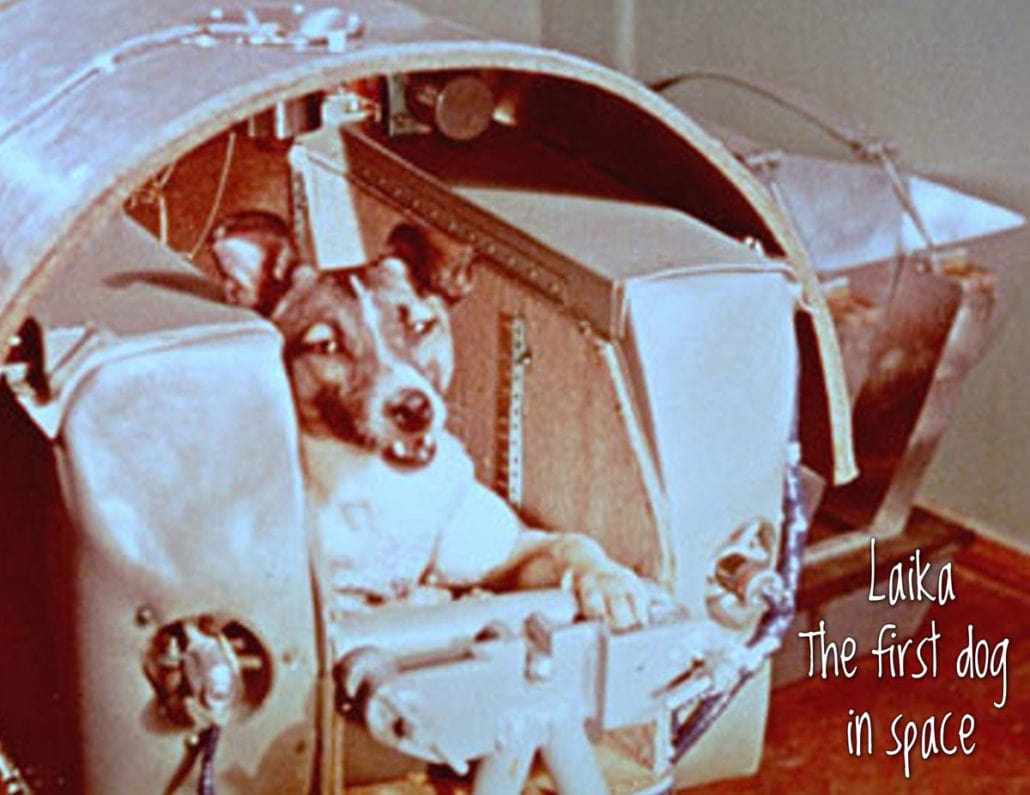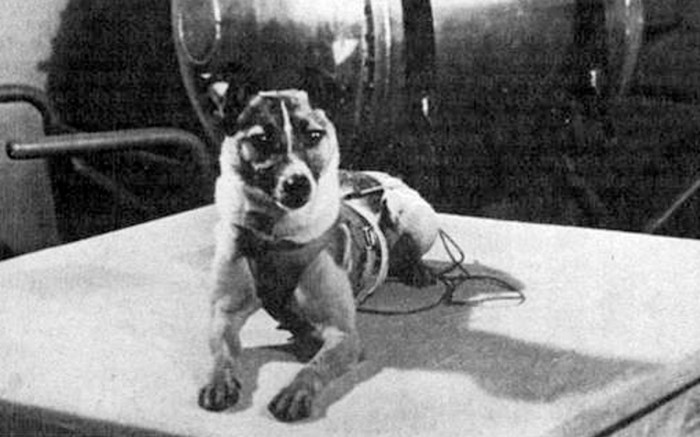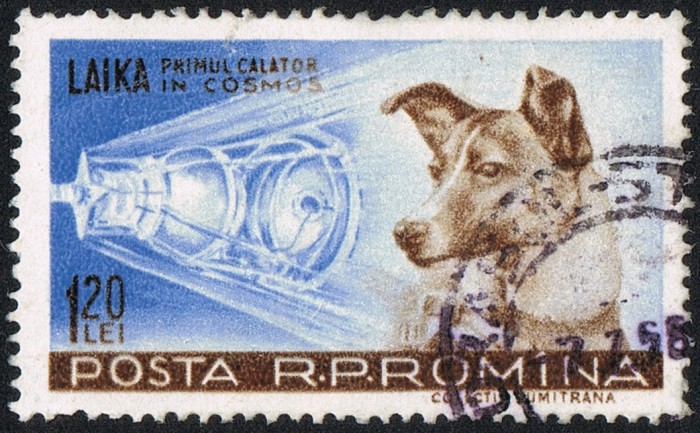On 3 November 1957, a stray dog blazed her way into the history books forever. Laika, a 3 year old mixed breed from the cold streets of Moscow, became the first living creature to ever venture into space. Her historic mission paved the way for human space travel a few years later, but it came at a price. This was a one-way trip for Laika. Her life’s biggest achievement would end up being her biggest sacrifice too.
Before the mission
In the early years of the space race between America and the Soviet Union, the Soviets were keen to send the first human into space. Their Sputnik 1 craft was already the first artificial satellite in Earth’s orbit, and their Sputnik 2 was going to be even more of a historic event. It was going to be manned. Or rather, dogged.
Laika was selected for the mission, because Soviet scientists believed Moscow strays to be a tenacious bunch and better equipped at handling the colder conditions expected in space. It also helped that Laika was female and had a calmer, friendlier temperament than her male equivalents.
The training
Training was absolutely essential to help prepare Laika for her mission. It started long before the actual launch date and mainly involved scientists simulating launch conditions to get her as comfortable with them as possible. They also acclimatised her to the living conditions on board the Sputnik 2 and introduced her to a special diet that would sustain her on the mission.
Laika wasn’t alone during training though. Two other dogs, Albina and Mushka, were also trained for the Sputnik 2 flight, but only Laika was selected as the “flight dog”.
The launch
On 3 November 1957 the Sputnik 2 was successfully launched and took about 103 minutes to reach the Earth’s atmosphere. Its mission was to orbit the planet for 162 days and collect data on the conditions in space. Part of that data collection also involved seeing how the launch and the weightlessness of space would affect Laika.
The Soviets reported soon after that Laika managed to complete 4 days in orbit before she died due to a lack of oxygen when the spacecraft’s batteries failed. In 2002, however, it was revealed that a malfunction caused the craft to overheat and that Laika probably only made it a few hours after launch.
A lasting legacy
Despite her short stint in space, Laika’s mission made a major impact on space history. The data that she provided on the weightlessness of space and its effects on a living being, was invaluable and helped Yuri Gagarin become the fist man in space in 1961. Quite an achievement for a little stray from Moscow.



